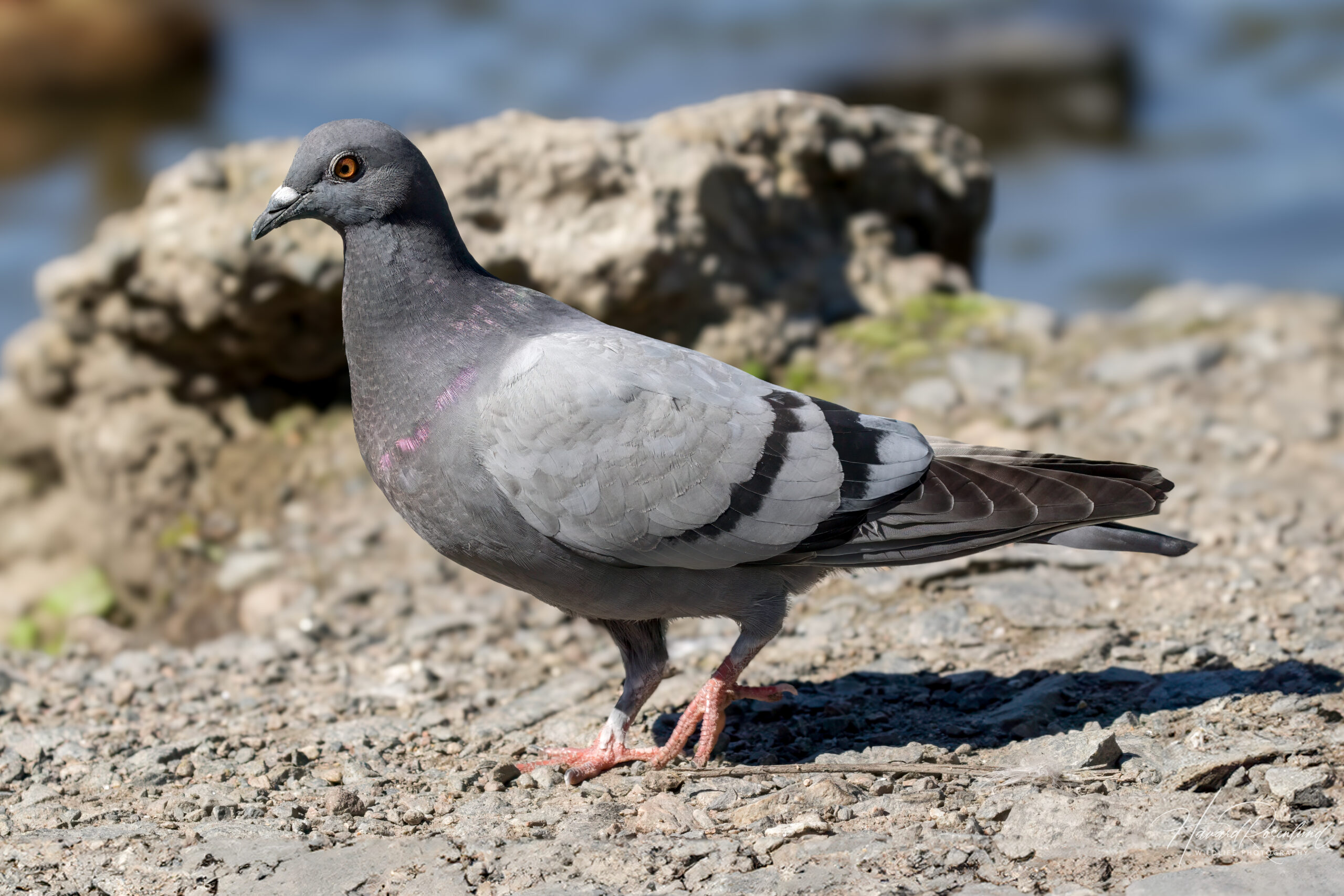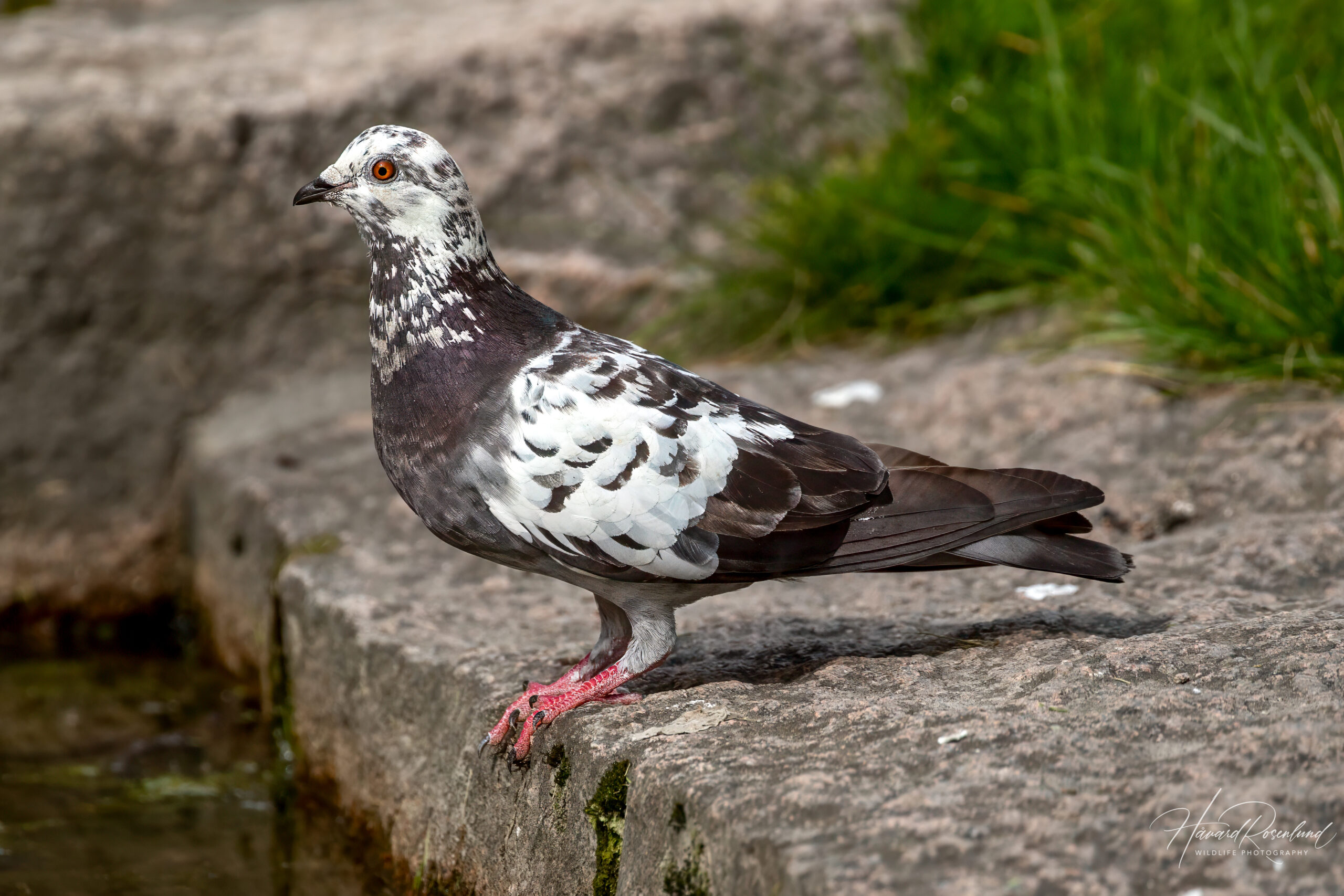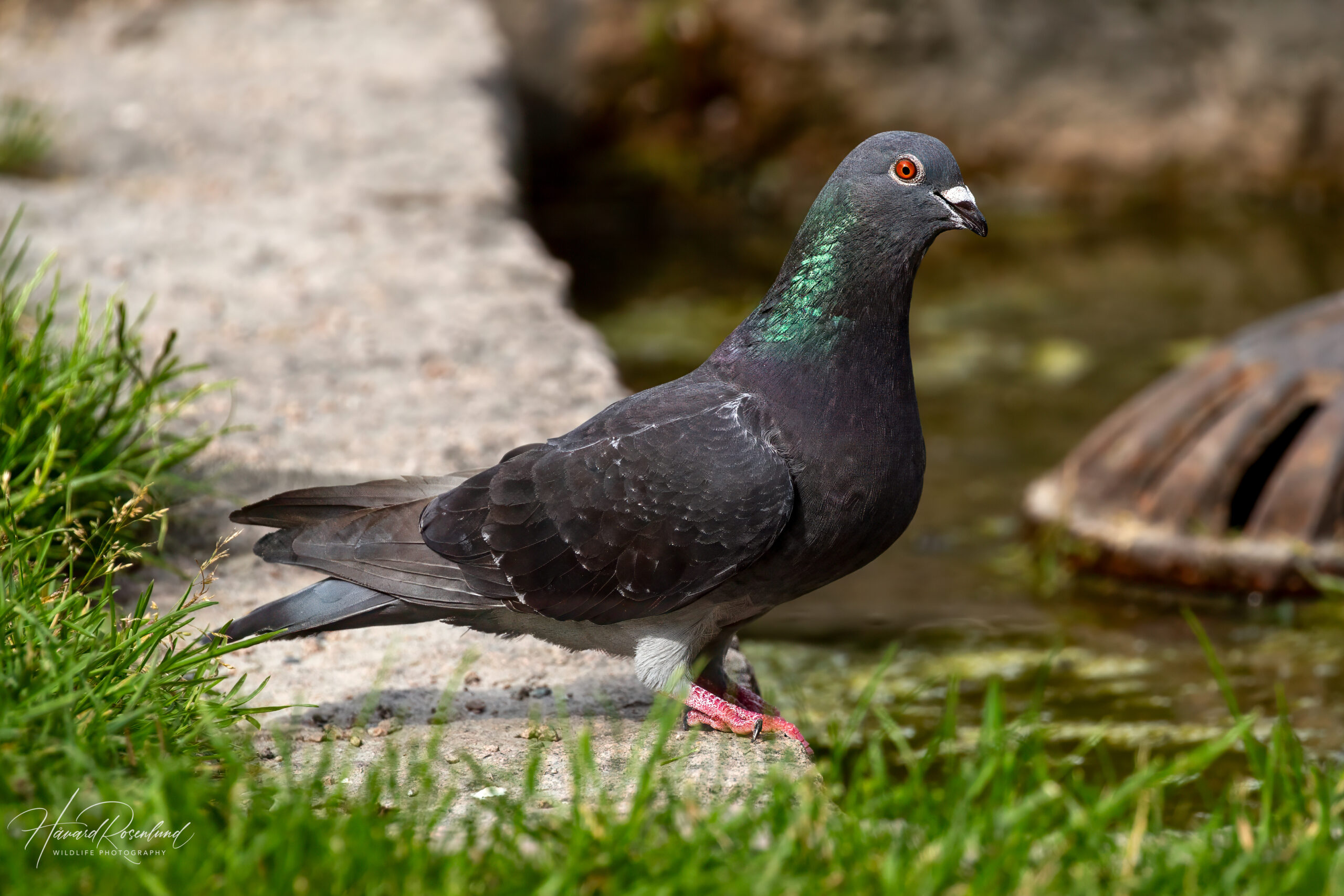Description
The rock pigeon (Columba livia), also known as rock dove and common pigeon, is a species of pigeon originally native to Europe, North Africa, and parts of Asia. After domestication it is now found across the globe in or near human environments. These birds typically measure about 32 to 37 cm (12.6-14.6 in) in length and weigh between 238 to 380 grams (8.4-13.4 oz). Their plumage is generally blue-gray with two black bars on each wing, though coloration can vary widely among individuals, especially in feral populations. Feral pigeons, commonly seen in urban environments, are descended from escaped domestic pigeons and have adapted to city life, displaying a variety of colors and patterns due to mixed breeding.
Diet & habitat
In the wild, rock pigeons prefer natural cliffs and rocky outcrops. In cities, they adapt to buildings and other structures that resemble their natural roosting edges. Their diet predominantly consists of seeds and grains, but they can also consume small insects and other food items, especially in urban settings where human food waste is abundant. Feral pigeons exhibit versatile feeding behavior, often seen pecking on the ground in parks or streets. Rock pigeons are known for their methodical feeding habits, often forming flocks to feed in cities or agricultural fields where they can collectively spot and escape from predators.
Nesting
Rock pigeons breed throughout the year, though peak times can depend on the local climate. In their natural habitats, they typically nest on cliff faces or other secure ledges where they build nests from sticks and debris. Urban pigeons have adapted to use building ledges or structural nooks similar to their natural nesting sites. A typical clutch contains two eggs, with both parents sharing incubation duties for about 17 to 19 days. Fledging occurs around 30 days after hatching, with young pigeons becoming independent several weeks thereafter. Feral pigeons follow similar breeding patterns and often reuse successful nest sites multiple times.
Relationship to humans
Domesticated thousands of years ago, rock pigeons have been used for food, as messengers, and even in racing competitions. They have a longstanding relationship with humans, which has led to their global spread as feral populations in cities around the world. This association has sometimes negatively impacted their reputation, as they are often considered pests due to their droppings and the potential diseases they can carry.
Status
Rock pigeons are listed as least concern on the IUCN Red List due to their vast range and large populations. While feral populations are subject to local control measures, wild and natural populations are believed to be declining due to interbreeding with feral birds. Even though feral pigeons and wild rock pigeons are the same species, feral pigeons have been shaped and bred by humans for millennia. When the two meet and interbreed, the wild rock pigeon’s adaptation to natural ecosystems becomes diluted, and over time the wild form may disappear from that area altogether.








